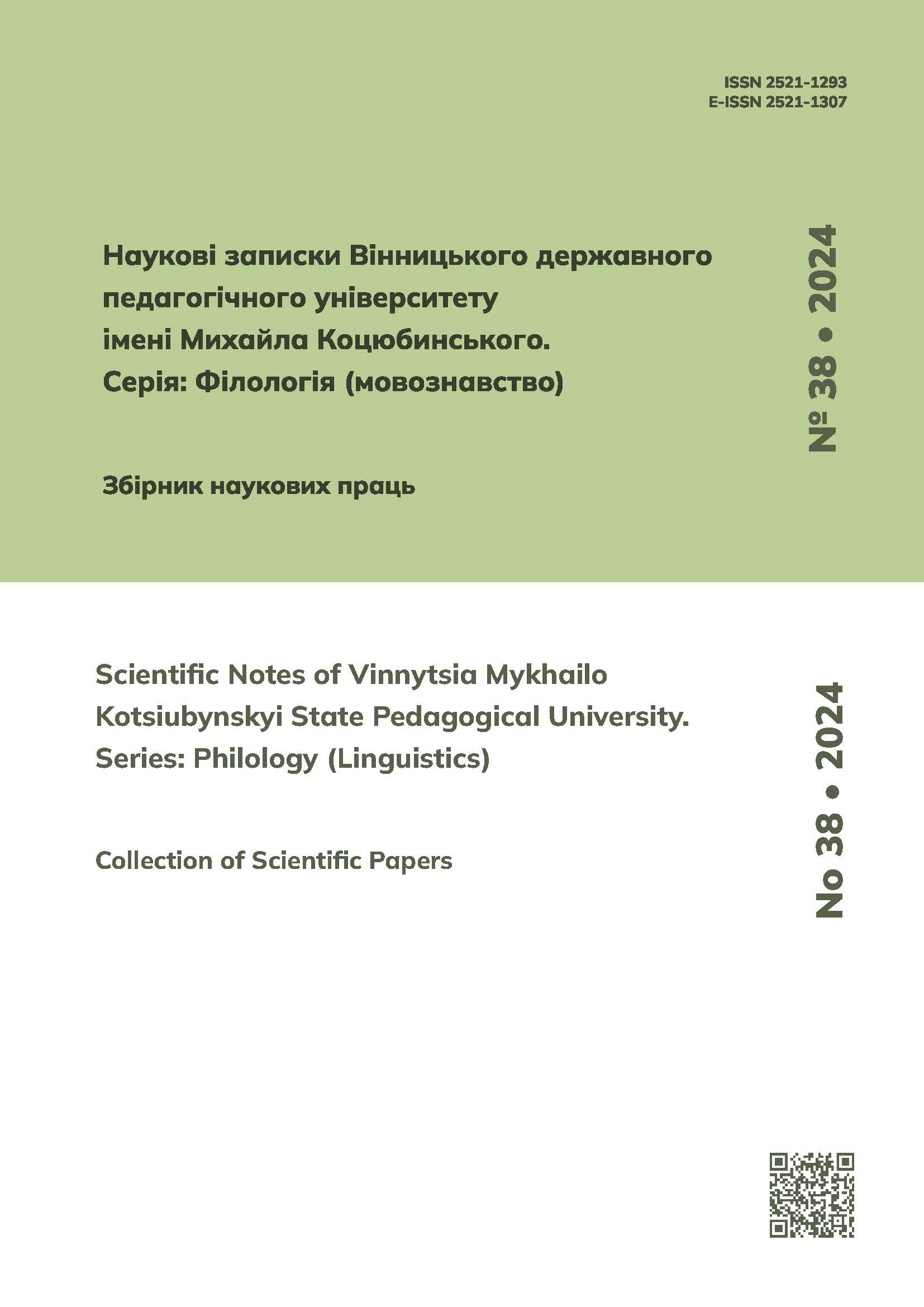From observations on the modern trends of the functioning of the Ukrainian language in the city of Izmail
https://doi.org/10.31652/2521-1307-2024-38-04Published 2024-08-14
Keywords
- Ukrainian language, Izmail, language biography, language legislation, language norm, dynamics
Copyright (c) 2024 Maryna Deliusto

This work is licensed under a Creative Commons Attribution 4.0 International License.
How to Cite
Abstract
It is the special role of Izmail among other settlements of the Budzhak region that necessitates paying attention to the functioning of the Ukrainian language in Izmail, to changes in the linguistic behavior of the city’s residents in connection with social and political transformations in the country, in connection with Russia’s military aggression against Ukraine. The relevance of this issue is reinforced by the fact that the success of the Ukrainian language in Izmail will largely determine the state of the Ukrainian language in the region as a whole and national security in it. The purpose of the article is to highlight the main trends in the functioning of the state language in Izmail, Odesa region, caused by changes in the literary standard, in the language and educational legislation of Ukraine, in particular the adoption of the Laws of Ukraine “On Education” 2017, “On Ensuring the Functioning of the Ukrainian Language as the State Language” 2019, “Ukrainian Spelling” 2019, social and political transformations, and Russia’s military aggression against Ukraine. The author uses descriptive method of investigation, method of language biography, observation and etc. Results. The author notes significant positive changes in the functioning of the Ukrainian language in Izmail after the start of military aggression against Ukraine: Ukrainian language is becoming more widely spoken, it is increasingly heard in the city in various spheres of communication; Ukrainian speech is becoming more literate, speakers are trying to ensure the purity and correctness of their Ukrainian speech; attitudes towards Ukrainian as a native language are changing (even representatives of other ethnic groups, such as Moldovans, Gagauz’s, Bulgarians, etc. are beginning to consider it as such), as a prestigious, positive language, and its aesthetic values are changing. Originality. The peculiarities of the very dynamic functioning of the Ukrainian language in the city of Izmail in this time, in the context of changes in language and educational legislation, and Russia’s military aggression against Ukraine have not yet been scientifically described. Conclusion. Positive changes in the functioning of the Ukrainian language in Izmail are not yet stable, but rather trends that need to be consolidated by continuing the process of Ukrainization. This will contribute to the full-fledged consolidation of the Ukrainian language in Izmail, and to the expansion of its use as a means of interethnic communication in the region’s multilingual environment.
Downloads
References
- Гриценко, П. Ю. (1984). Моделювання системи діалектної лексики / Відп. ред. І. Г. Матвіяс, Київ: Наукова думка, 1984, 228 с.
- Делюсто, М. С. (2023). Урахування рідного ідіому мешканців полілінгвального півдня Одещини в процесі навчання української мови. Науковий вісник Ужгородського університету. Серія: Філологія, Том 2, № 50, С. 155–160. https://doi.org/10.24144/2663-6840/2023.2(50).155–160 DOI: https://doi.org/10.24144/2663-6840.2021.2.(46).91-97
- Дроздовський, В. П. (1962). Українські говірки Бессарабського Примор’я (на матеріалі обстеження Саратського, Татарбунарського та Білгород-Дністровського районів Одеської області): дис. ... кандтата філол. наук : 661 «Мови народів СРСР (українська мова)», Київ, 473 с.
- Заворотна, Т. П. (1967). Лексика українських наддунайських говірок: дис. ... кандидата філол. наук : 661 «Мови народів СРСР (українська мова)», Ужгород, 333 с.
- Колесников, А. О. (2016). Атлас українських говірок межиріччя Дністра і Дунаю. Ізмаїл: ІРБІС, 168 с.
- Колесников, А. О. (2015). Морфологія українських південнобесарабських говірок: генеза і динаміка. Ізмаїл: «СМИЛ», 676 с.
- Колесников, А. (2020). Перспективи дослідження українськомовного простору півдня Одещини: об’єкти, прийоми, класифікації. Наука і освіта українського Придунавʼя: виміри, виклики, перспективи: колективна монографія укр. та англ. мовами / За ред. Я. Кічука. Ізмаїл: РВВ ІДГУ-СМИЛ, С. 15–39.
- Колесников, А. (2019). Українська мова як засіб міжнаціонального спілкування в полімовному межиріччі Дністра і Дунаю: напрямки роботи лінгвістів. Науковий вісник Ізмаїльського державного гуманітарного університету, Вип. 44, С. 23–31.
- Мовна ситуація (1994). Мовна ситуація в Придунайському краї Одеської області України: 1993–1994 рр. / упор. О. А. Колесников, Ізмаїл: Ізмаїльський педагогічний інститут, 68 с.
- Мукан, А. М. (1960). Українські наддунайські говірки. Фонетико-граматичні особливості : дис. ... кандидата філол. наук : 661 «Мови народів СРСР (українська мова)», Глухів, 291 с.
- СУГО (2011) – Словник українських говорів Одещини / гол. редактор О. І. Бондар. Одеса: ОНУ ім. Мечникова, 223 с.
- Nekvapil, J. (2003). Language biographies and the analysis of language situations: On the life of the German community in the Czech Republic. International Journal of the Sociology of Language, P. 63–83. https://doi.org/10.1515/ijsl.2003.038 DOI: https://doi.org/10.1515/ijsl.2003.038





